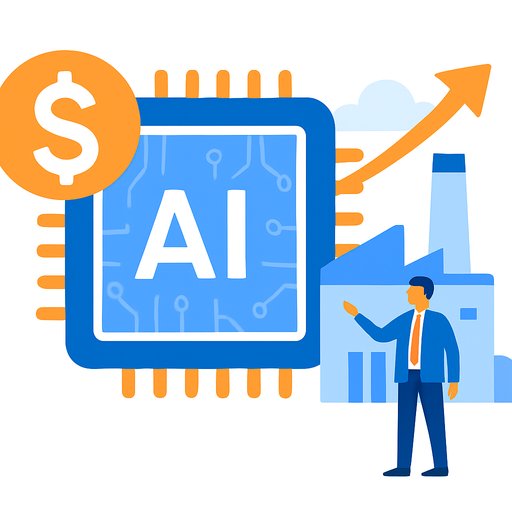Samsung's $310B AI and Chip Push: What Ops Teams Should Do Now
Samsung announced a five-year, $310 billion investment focused on AI and semiconductors, including a new Pyeongtaek Plant 5 slated to start operations in 2028. The plan also adds two Samsung SDS AI data centers in South Jeolla and Gumi, and explores a domestic line for next-gen batteries at Samsung SDI.
With South Korea moving to boost national AI capability, this signals more memory supply and infrastructure capacity coming online later in the decade. For operations leaders, this is a planning window-procurement, capacity, and risk models should update now, not in 2028.
Key Moves You Should Note
- Pyeongtaek Plant 5: New semiconductor facility aimed at growing memory output; operations begin in 2028.
- AI Infrastructure: Samsung SDS to stand up two AI data centers (South Jeolla, Gumi).
- Energy Storage: Samsung SDI assessing a domestic line for next-gen batteries, including all-solid-state.
- Macro Context: AI demand is lifting profits for memory leaders; valuations are hot, with bubble risk flagged by markets.
Why This Matters for Ops
Capacity relief is on the horizon, but not immediate. Expect tight memory markets to persist until new lines stabilize yield and logistics. If your AI workloads depend on high-performance memory, plan for allocation constraints and price swings through mid-to-late 2028.
The new data centers may offer regional options for AI training and inference. If you operate in Asia or route workloads through Korea, start evaluating latency, compliance, and interconnect implications.
Timeline Signals to Build Into Your Plans
- 2025-2026: Long-lead procurement ramps; expect continued price and lead-time volatility for advanced memory.
- 2027: Installation, validation, and pilot phases typically begin; supply may improve in pockets, but don't bank on it.
- 2028: Pyeongtaek Plant 5 scheduled to start operations; expect a staged ramp before volume output stabilizes.
Sourcing and Capacity: What to Adjust
- Update category strategies for memory and accelerators with 2028 capacity in mind; extend hedges through 2027 where feasible.
- Negotiate allocation and price-adjustment clauses now; secure options for incremental volumes tied to ramp milestones.
- Dual-source across qualified vendors and geographies to reduce single-country exposure.
- Align internal build forecasts with realistic yield ramps, not just nameplate capacity.
Data Centers: Workload Placement Planning
- Map AI training vs. inference needs by region; evaluate whether Samsung SDS locations reduce latency or transit costs.
- Pre-assess power, cooling, and connectivity SLAs to avoid surprises in 2028 onboarding.
- Prepare for interconnect upgrades between existing hubs and Korea-based facilities if you expect cross-region traffic.
Risk Map to Track
- Market Risk: AI demand could soften if valuations correct; build flexible volume bands into contracts.
- Execution Risk: Fab and data center schedules can slip; tie commitments to tested capacity, not announcements.
- Policy Risk: Export controls and trade shifts can affect tooling, components, and delivery timelines.
- Cost Risk: Memory pricing may remain volatile until post-ramp; set thresholds for re-quoting and substitutions.
90-Day Action Checklist
- Refresh your AI bill of materials and identify memory/accelerator bottlenecks through 2029.
- Run scenarios: baseline, upside AI adoption, and downside correction. Pre-approve playbooks for each.
- Lock provisional allocations with suppliers; include step-up rights tied to 2028 capacity coming online.
- Review DC placement strategy; shortlist Korea-adjacent options and required network changes.
- Define KPIs: lead-time adherence, allocation fill rates, cost-per-inference/training hour, and supply concentration.
Where to Monitor Announcements
Track updates on Samsung's official newsroom for capacity, timelines, and product notes. Samsung Newsroom
Upskilling for Ops Teams
If you're tasked with scaling AI programs while controlling risk and cost, get your team aligned on procurement, workload placement, and automation fundamentals. See curated options by role here: AI courses by job.
Bottom line: treat 2028 as a capacity inflection point, not a quick fix. Build flexibility into your contracts and infrastructure plans now so you can move the moment new supply turns on.
Your membership also unlocks:






